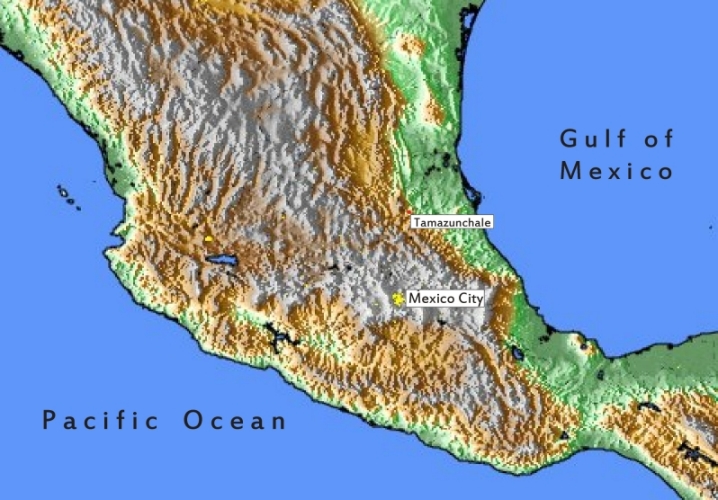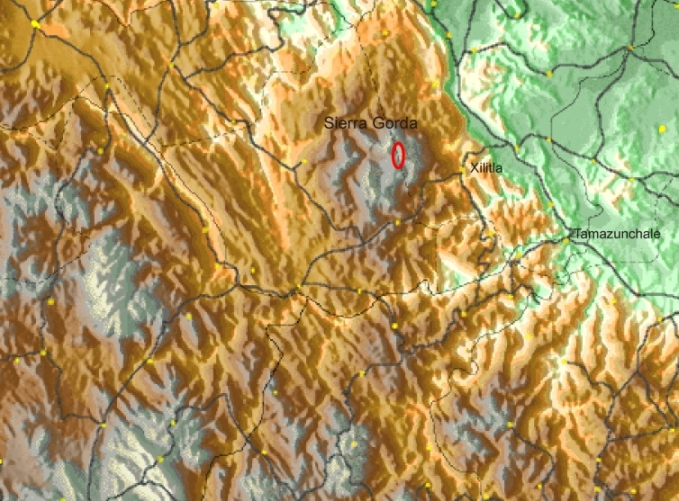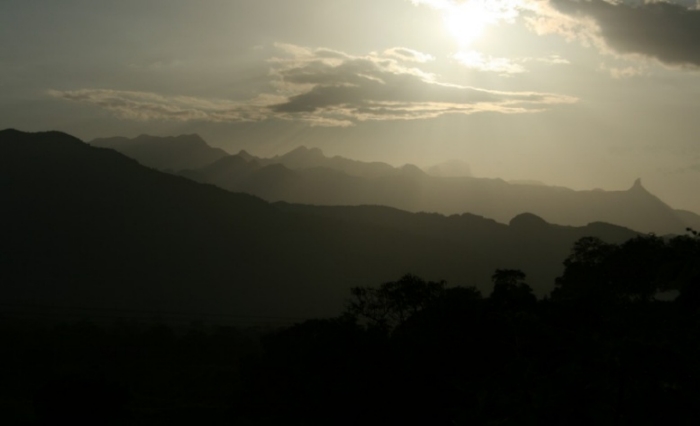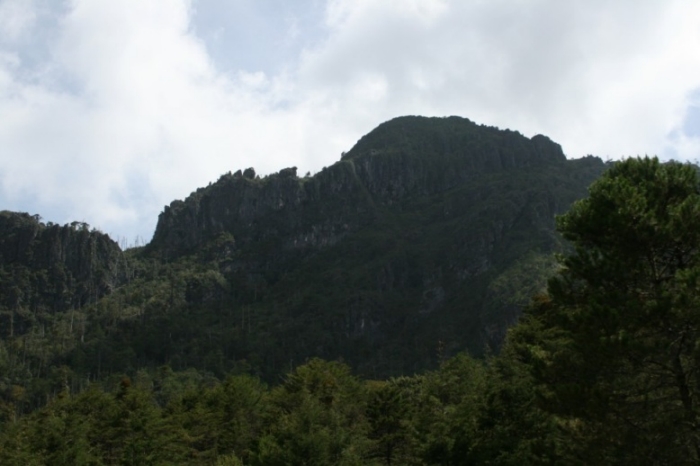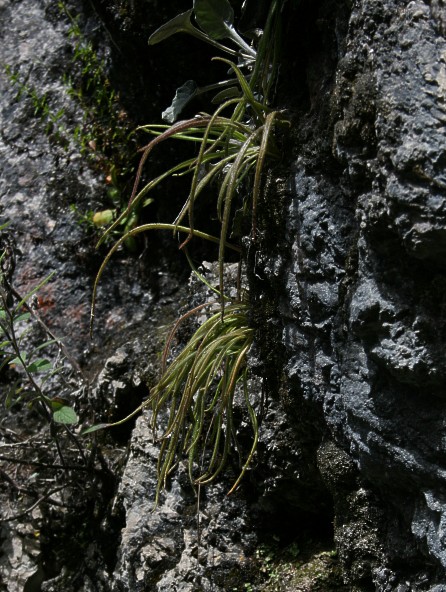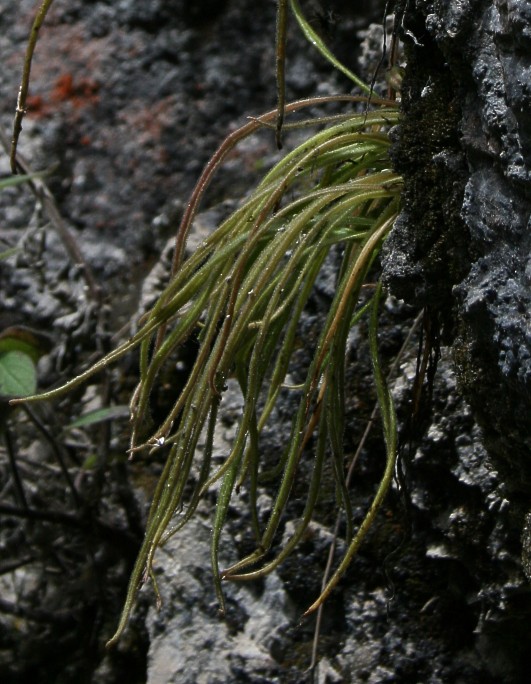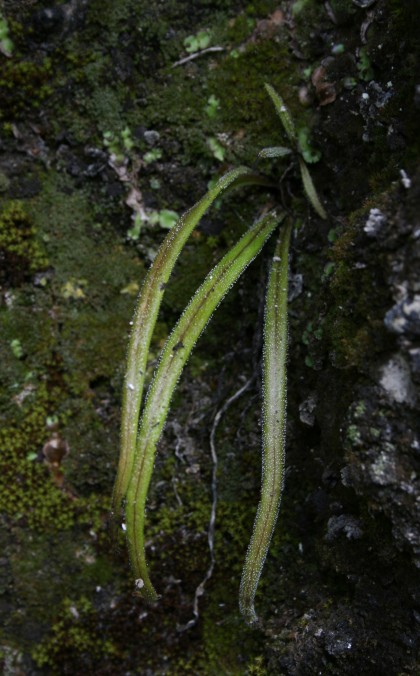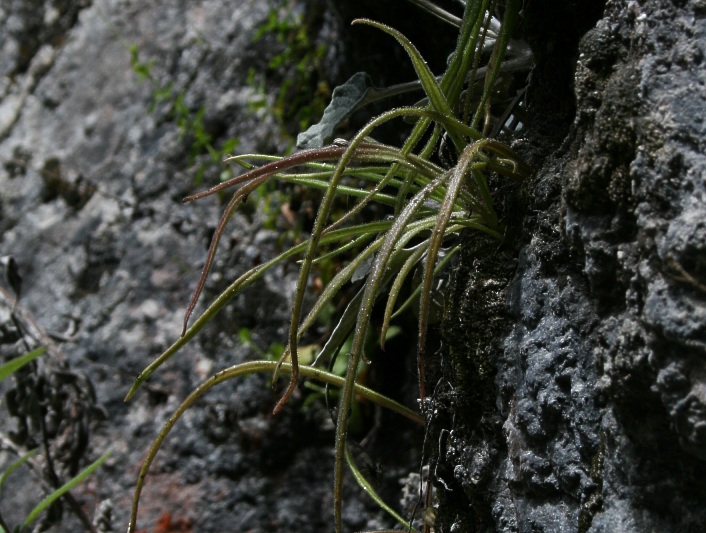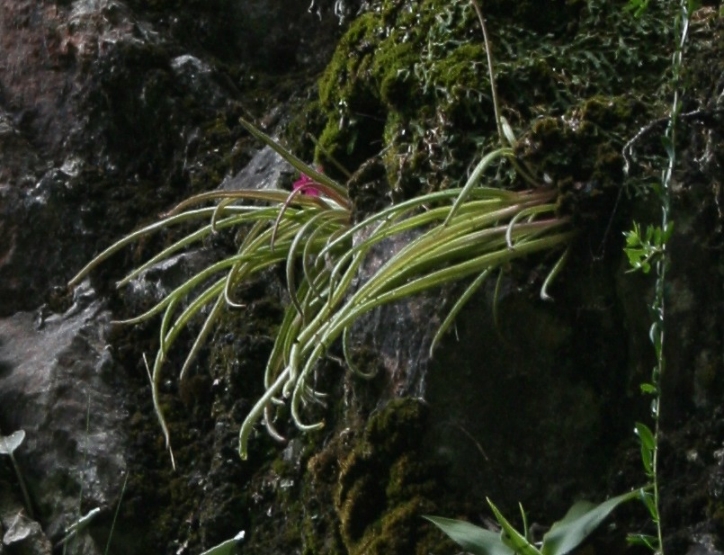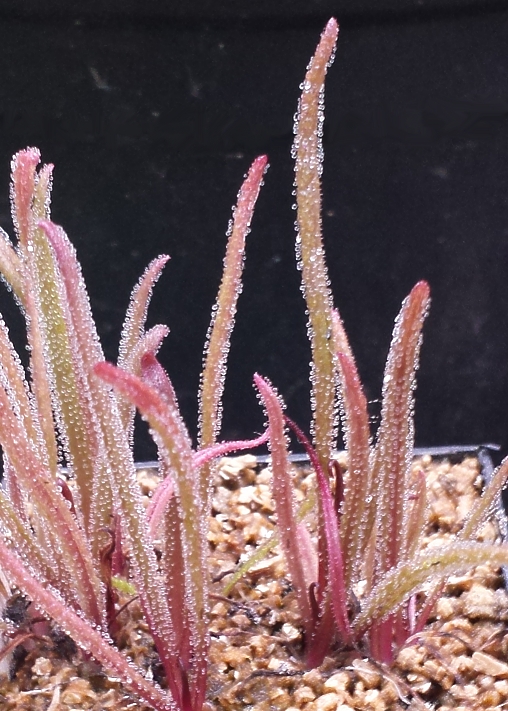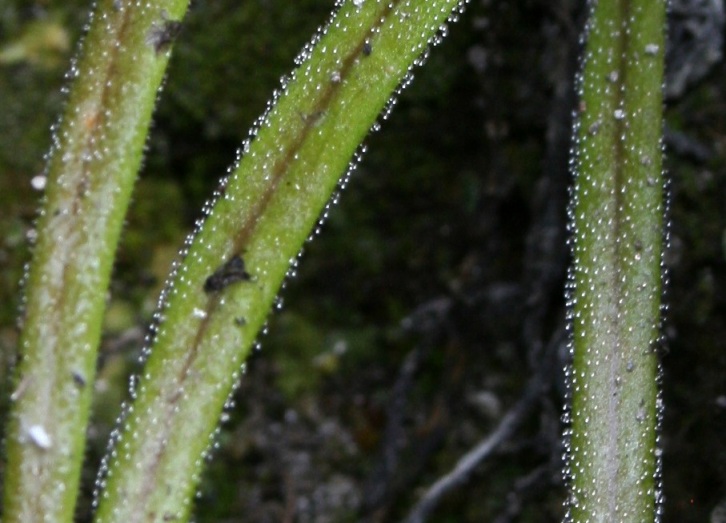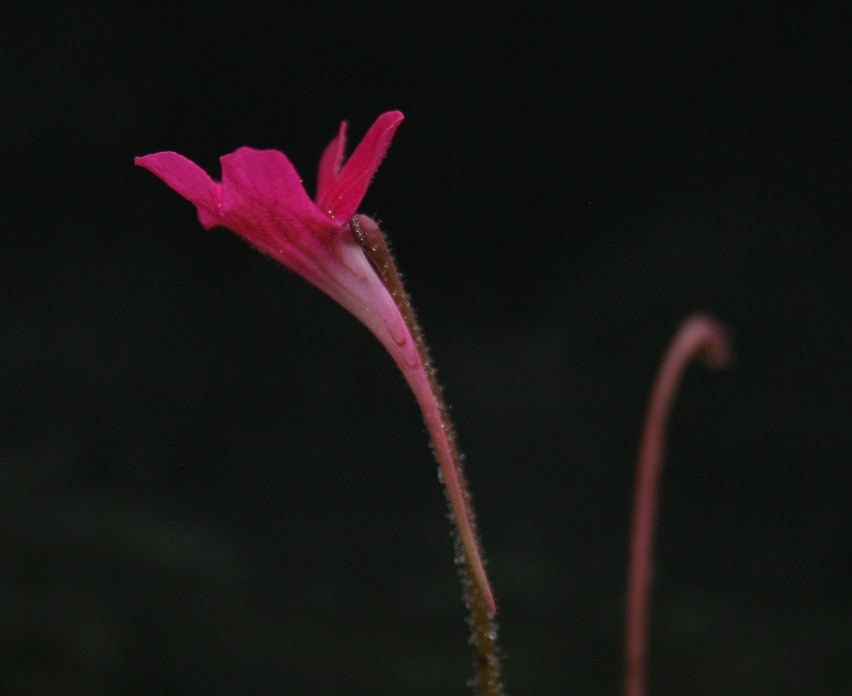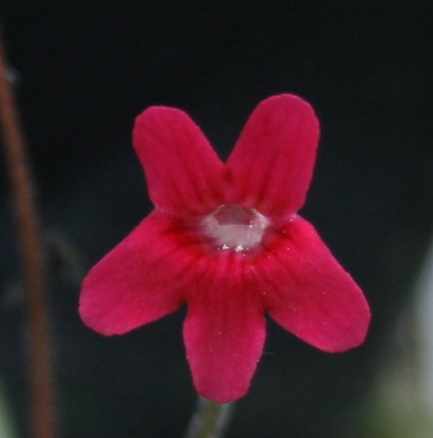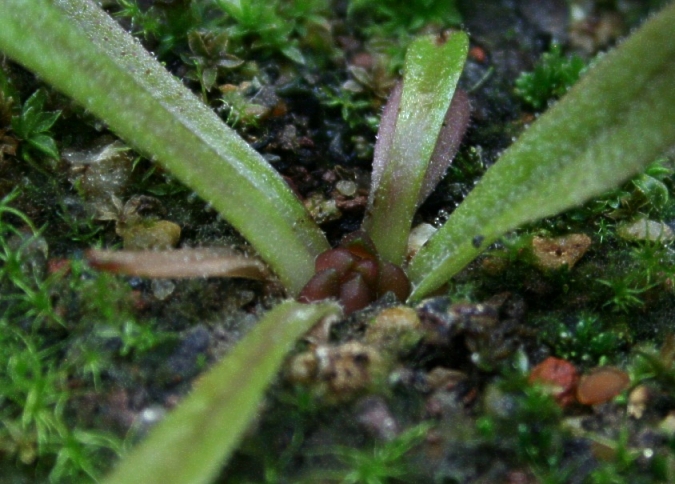
Oliver Gluch's World of Carnivorous Plants or: "What you always wanted to know about butterworts" |
| Impressum |

| Home | Origin | Prey | Species | Plant Purchase | Other Carnivorous Plants | Info about Carnivorous Plants | About me |
Pinguicula calderoniae Zamudio (2001)During
studies
of the flora and fauna of the biosphere reserve Sierra
Gorda located in the border area of the two Mexican
states of San Luis Potosí and Querétaro, a new
butterwort species was found and described by the
Mexican botanist Sergio Zamudio, which he named P.
calderoniae. This species occurs in a very
restricted area between 2200 and 2300 m a.s.l. Until
today this species is only known from the surrounding
cliffs of the 2 plains Llano Chiquito and Llano del
Conejo.
The
plants
do occur in a tropical montane cloud forest (bosque
mesófilo de montaña). During the rainy season there is
regular rainfall, while during the dry season, there are
very few precipitations, so the plants get their
humidity from the clouds and fogs that do form in these
mountain plains. P.
calderoniae grows on vertical calcareous
cliffs, where the plants can be found either in moss or
in eroded rock material in crevices. P.
calderoniae seems to divide easily, therefore
often several plants grow together at the same
spot. In this higher mountain regions in winter
also frosts and snow do occur regularly, therefore the
species needs to be frost resistant to a certain degree.
P. calderoniae is a
tropical heterophyllous species. The winter rosette has
an onion like appearance and consists of up to
30 leaves. The winter leaves are succulent, up to
1,5 cm long, pointed and show a dark red to
brown-red colour. Often the winter rosettes are growing
below the surface. In spring the plants form long
lanceolate summer leaves. The size is spectacular as
they can reach up ton 25 cm in length. Depending if the
plants are exposed to direct sunlight or not, the leaf
colour is pure green or reddish. An indivudual plant
does produce only 5 to 6 summer leaves. Then at the end
of August the plants begin to form winter leaves
again.
The
flowering
period is from June to mid of August. P.
calderoniae does form 1 to 3 flowers per
season that occur from the summer rosette. The
flower is two-lipped and the colour of the corolla,
corolla tube and the spur is red-purple. Including the
spur the flower can reach a size of 3,5 cm. The corolla
tube is, similar as with
P. crassifolia,
funnel shaped and up to 1 cm long. The spur is with its
up tp 1,6 cm also pretty long for the genus Pinguicula.
For
a
successful cultivation of P. calderoniae a
calcareous substrate does not seem to be mandatory, as
my experiences with vermiculite (that is normally pH
neutral) is also very positive. The use of more organic
substrates is also possible, but then you should be
precautious that the substrate doesn't stay to wet, as
this may cause root rotting. In winter it is recommended
to keep the plants dry or only moist.
|
